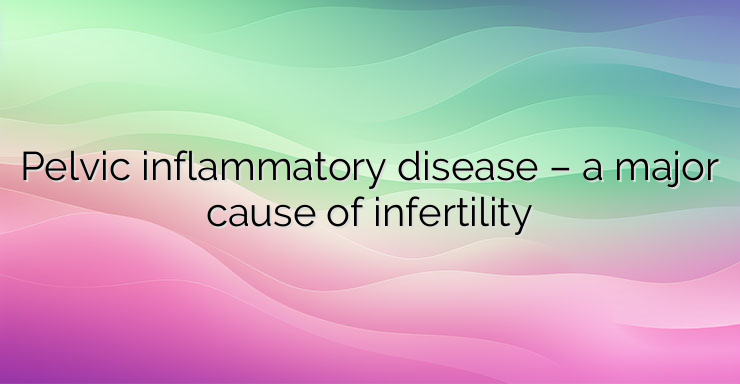Pelvic inflammatory disease is a serious infection that spreads to the uterus, fallopian tubes and/or ovaries. The disease develops as a result of certain types of bacteria that spread from the vagina to the reproductive organs. Bacteria from untreated sexually transmitted infections are the most common cause of the condition. However, bacteria that are normally found in the vagina can also under certain conditions lead to the development of an infection. A severe form of pelvic inflammatory disease can cause permanent damage to the reproductive organs and lead to infertility. Testing and treatment for sexually transmitted diseases is the best way to prevent pelvic inflammatory disease. Every year more than 1 million women in Europe are diagnosed with the disease. And more than 100,000 people become infertile because of it. Pelvic inflammatory disease occurs most often in women of reproductive age between 15 and 25 years. Symptoms may be mild or unnoticeable. But they can also come on suddenly and include: Pain or tenderness in the stomach or lower abdomen, which is the most common symptom; Abnormal vaginal discharge, usually yellow or green with a foul smell; Chills or fever; Nausea and vomiting; Pain during sex; Burning when urinating; Irregular periods, spotting, or cramping throughout the month. Pain from pelvic inflammatory disease is mainly felt in the lower abdomen or pelvic area. Bacteria that enter the reproductive tract cause pelvic inflammatory disease. These bacteria travel from the vagina, through the cervix, and up into the uterus, fallopian tubes, and ovaries. Normally, when bacteria enter the vagina, the cervix prevents them from spreading deeper into other reproductive organs. However, any type of infection can cross this barrier. Many types of bacteria can cause pelvic inflammatory disease, but the two most common infections that have been proven to cause it are gonorrhea and chlamydia. These two sexually transmitted infections cause about 90% of all cases of pelvic inflammatory disease. Less commonly, the disease develops when bacteria from the normal flora get into the reproductive organs. This can happen after: Birth; Pelvic organ surgery; Abortion; Placement of intrauterine pessaries. The risk is highest within a few weeks after the procedure. Can pelvic inflammatory disease be defined as a contagious disease? Yes, it is most commonly spread during unprotected sex. The longer the “fight” with inflammation continues, the more serious its consequences can be. The infection can cause connective tissue to form in the fallopian tubes. And scarring, in turn, can lead to several problems, including: Chronic pelvic pain. Prolonged pelvic pain is the most common complication. One study estimated,that about 20% of women develop chronic pelvic pain. Ectopic pregnancy. The connective tissue formed can prevent the fertilized egg from passing into the uterus. This leads to her implantation in the fallopian tubes. The rate of ectopic pregnancy in women with pelvic inflammatory disease is much higher than in women without. Infertility. Up to 10% of women suffering from pelvic inflammatory disease lose their ability to conceive because connective tissue blocks their fallopian tubes and prevents them from releasing an egg. References: 1. Centers for Disease Control and Prevention. Pelvic Inflammatory Disease (PID): Basic Fact Sheet. (https://www.cdc.gov/std/pid/stdfact-pid.htm) 2. Jennings LK, Krywko DM. Pelvic Inflammatory Disease. (https://www.ncbi.nlm.nih.gov/books/NBK499959/) 2022 Jun 5. In: StatPearls [Internet]. Treasure Island, FL: StatPearls 3. Planned Parenthood. Pelvic Inflammatory Disease (PID). (https://www.plannedparenthood.org/learn/health-and-wellness/pelvic-inflammatory-disease-pid) 4. The American College of Obstetricians and Gynecologists. Pelvic Inflammatory Disease (PID). (https://www.acog.org/womens-health/faqs/pelvic-inflammatory-disease) 5. US Department of Health and Human Services. Office on Women’s Health. Pelvic Inflammatory Disease. (https://www.womenshealth.gov/az-topics/pelvic-inflammatory-disease)


Leave a Reply